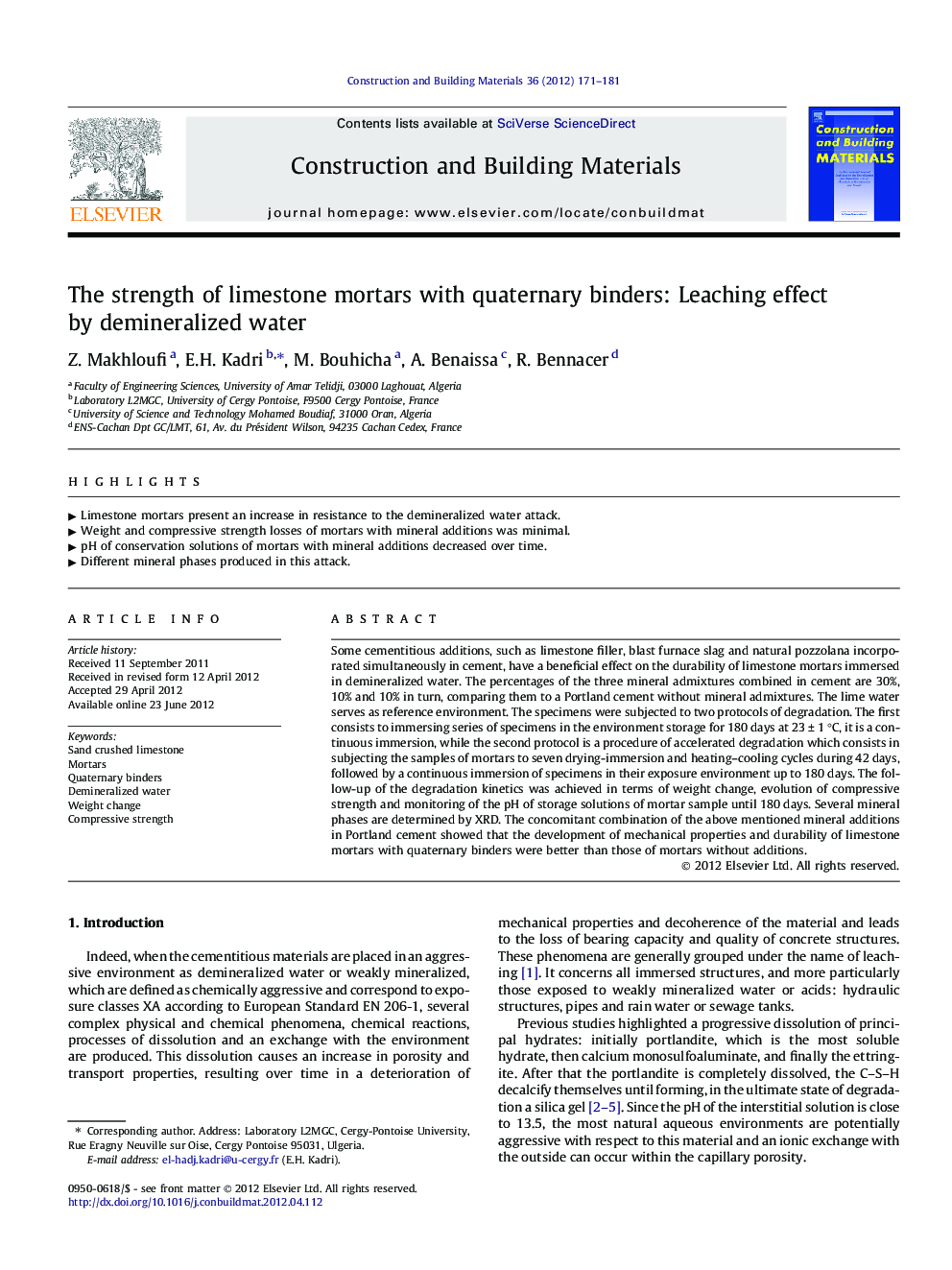| Article ID | Journal | Published Year | Pages | File Type |
|---|---|---|---|---|
| 258610 | Construction and Building Materials | 2012 | 11 Pages |
Some cementitious additions, such as limestone filler, blast furnace slag and natural pozzolana incorporated simultaneously in cement, have a beneficial effect on the durability of limestone mortars immersed in demineralized water. The percentages of the three mineral admixtures combined in cement are 30%, 10% and 10% in turn, comparing them to a Portland cement without mineral admixtures. The lime water serves as reference environment. The specimens were subjected to two protocols of degradation. The first consists to immersing series of specimens in the environment storage for 180 days at 23 ± 1 °C, it is a continuous immersion, while the second protocol is a procedure of accelerated degradation which consists in subjecting the samples of mortars to seven drying-immersion and heating–cooling cycles during 42 days, followed by a continuous immersion of specimens in their exposure environment up to 180 days. The follow-up of the degradation kinetics was achieved in terms of weight change, evolution of compressive strength and monitoring of the pH of storage solutions of mortar sample until 180 days. Several mineral phases are determined by XRD. The concomitant combination of the above mentioned mineral additions in Portland cement showed that the development of mechanical properties and durability of limestone mortars with quaternary binders were better than those of mortars without additions.
► Limestone mortars present an increase in resistance to the demineralized water attack. ► Weight and compressive strength losses of mortars with mineral additions was minimal. ► pH of conservation solutions of mortars with mineral additions decreased over time. ► Different mineral phases produced in this attack.
